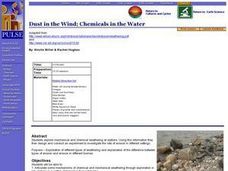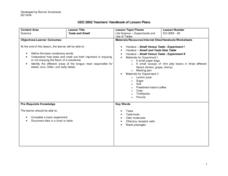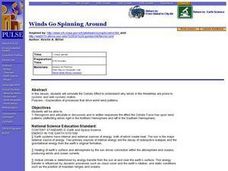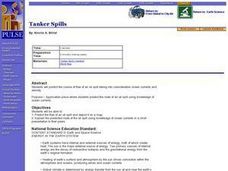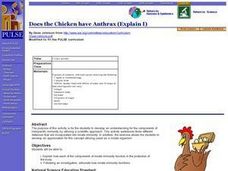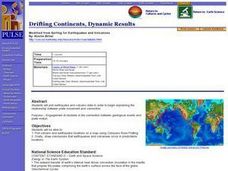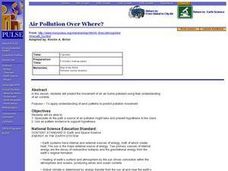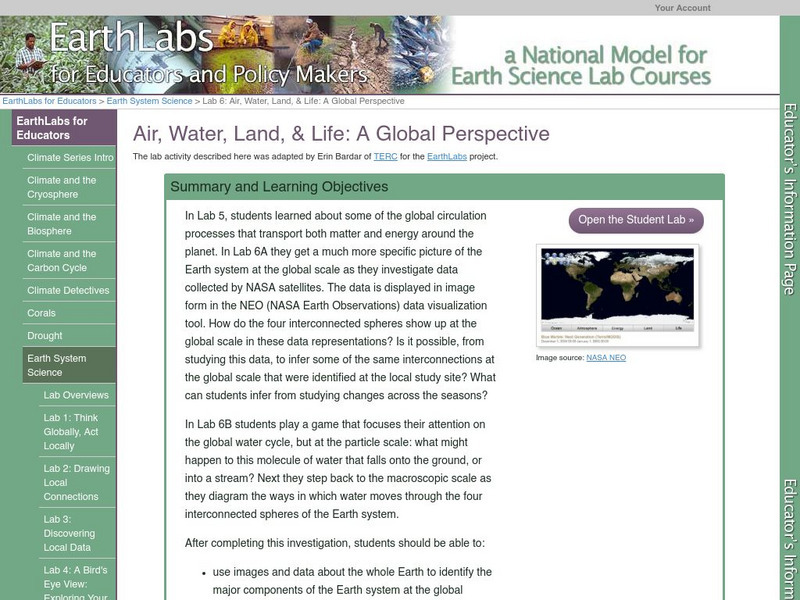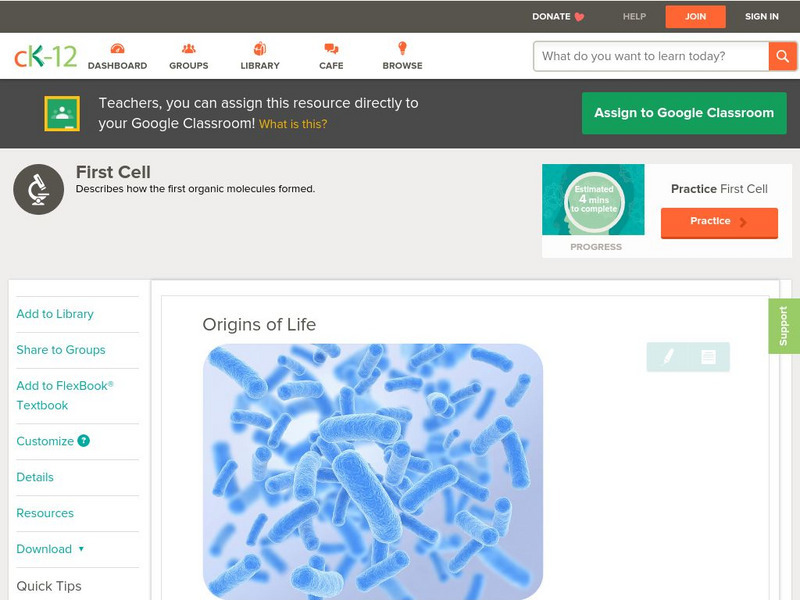Curated OER
Dust in the Wind; Chemicals in the Water
Students explore mechanical and chemical weathering at stations. They articulate some mechanisms of chemical and mechanical weathering through exploration in a lab. Students stations describe how chemical weathering differs from...
Curated OER
Taste and Smell
High schoolers experiment with sense of smell, and how it relates to sense of taste.
Curated OER
Winds Go Spinning Around
Students simulate the Coriolis Effect to comprehend why winds in the Westerlies are prone to cyclonic and anti-cyclonic motion. They arrive at an explanation of processes that drive world wind patterns
Curated OER
The Nature Of Dissolving Processes
Young scholars examine the rule of "like dissolves like." They define and describe solutions and solubility models on molecular liquids, ionic solids, and molecular solids.
Curated OER
How do plant & animal cells make and use energy?
Students show the relationship between the need for plants to undergo photosynthesis in order to generate oxygen. They see the flaws associated with this thinking because of the lack of CO2 and H2O and lack of sufficient gravity in order...
Curated OER
Tanker Spills
Students predict the flow of an oil spill and depict it on a map. They explain the predicted route of the oil spill using knowledge of ocean currents in a short presentation to their peers.
Curated OER
Putting on Mass: Just how do Trees grow?
Students articulate an explanation of photosynthesis. They identify problems they have with comprehension of how a plant gains mass. Students describe a historical experiment.
Curated OER
Water Quality Monitoring
Students comprehend the four parameters of water quality. They perform tests for salinity, dissolved oxygen, pH and clarity or turbidity. Students comprehend why scientists and environmental managers monitor water uality and aquatic...
Curated OER
Does the Chicken have Anthrax (Explain I)
Students explain how each of the components of innate immunity function in the protection of the body. Following an investigation, they articulate how innate immunity functions.
Curated OER
Breaking News English: Romantic Love Lasts Only a Year
In this English learning exercise, students read "Romantic Love Lasts Only a Year," and then respond to 47 fill in the blank, 7 short answer, 20 matching, and 8 true or false questions about the selection.
Curated OER
One Tough Worm
Students explain the process of chemosynthesis. They are able to explain the relevance of chemosynthesis to biological communities in the vicinity of cold seeps.
Curated OER
Drifting Continents, Dynamic Results
Students plot earthquake and volcano data using a Compass Rose Plotting. They explain the relationship between plate movement and connection. They draw conclusions that earthquakes and volcanoes occur in predictable locations.
Curated OER
Air Pollution Over Where?
Young scholars predict the movement of an air borne pollutant using their understanding of air currents. They determine which governments and/or communities should be contacted to be forewarned. They also explore the properties of their...
Curated OER
The Cell Cycle and Cancer
Students compare and contrast the cell cycle of frog eggs, normal cells, and cancer cells. They watch a video about early development of the frog embryo, generate a hypothesis in small groups, and listen to a teacher-led lecture. ...
Curated OER
Fallout!
Students plot the locations of fallout from two disasters that polluted much of the world's air. They plot the ash fallout from the 1980 Mt. St. Helen's eruption to see what the wind patterns in the United States look like overall. Next...
Science Education Resource Center at Carleton College
Serc: Lab 6: Air, Water, Land, & Life: A Global Perspective
An investigation that is part of a series of lab lessons that expose students to Earth Systems through research, data, and visualizations. In this lab, students will follow the pathway of water on a big scale and a small scale down to...
CK-12 Foundation
Ck 12: Life Science: 2.1 Elements and Compounds
Learn how basic elements form molecules to support life.
CK-12 Foundation
Ck 12: Life Science: Active Transport
[Free Registration/Login may be required to access all resource tools.] During active transport, molecules move from an area of low concentration to an area of high concentration. This is the opposite of diffusion, and these molecules...
CK-12 Foundation
Ck 12: Life Science: Origins of Life
[Free Registration/Login may be required to access all resource tools.] There is good evidence that life has probably existed on Earth for most of Earth's history. Fossils of blue-green algae found in Australia are the oldest fossils of...
CK-12 Foundation
Ck 12: Life Science: 3.8 Transcription
Understand process of constructing an mRNA molecule from DNA is known as transcription.
CK-12 Foundation
Ck 12: Life Science: Passive Transport
[Free Registration/Login may be required to access all resource tools.] The cell membrane is semi-permeable. Sometimes molecules need the help of special transport proteins or an input of energy to help them move across it. When an input...
CK-12 Foundation
Ck 12: Life Science: Dna Structure and Replication
[Free Registration/Login may be required to access all resource tools.] DNA must replicate (copy) itself so that each resulting cell after mitosis and cell division has the same DNA as the parent cell. DNA replication occurs during the S...
CK-12 Foundation
Ck 12: Biology: First Organic Molecules
[Free Registration/Login may be required to access all resource tools.] Examines how the first organic molecules were formed.
TeachEngineering
Teach Engineering: Surfactants: Helping Molecules Get Along
Students learn about the basics of molecules and how they interact with each other. They learn about the idea of polar and non-polar molecules and how they act with other fluids and surfaces. Students acquire a conceptual understanding...


